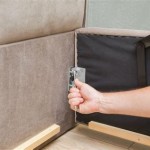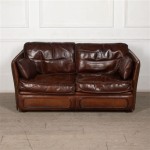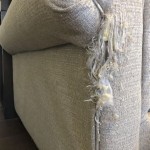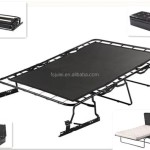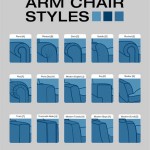Disadvantages of Leather Sofas
Leather sofas are often perceived as symbols of luxury and durability, gracing living rooms around the world with their classic appeal. While they offer a certain aesthetic and perceived longevity, potential buyers should be aware of the significant disadvantages associated with owning leather furniture. These drawbacks range from practical concerns related to cost and maintenance to issues affecting comfort and environmental impact. A thorough understanding of these factors is essential before making the considerable investment required for a leather sofa.
High Initial Cost
One of the most significant deterrents for potential buyers is the high initial cost associated with leather sofas. Compared to sofas made from fabric, microfiber, or other synthetic materials, genuine leather options command a significantly higher price tag. This premium is due to several factors. The raw material itself, animal hide, is a valuable commodity that requires specialized processing and tanning. The manufacturing process is also more labor-intensive, requiring skilled artisans to cut, sew, and upholster the leather with precision. Furthermore, the higher perceived value and status associated with leather contribute to the overall elevated price point.
The type of leather also plays a critical role in determining the price. Full-grain leather, considered the highest quality and most durable option, is typically the most expensive. It is made from the entire hide and retains the natural markings and imperfections of the animal, giving it a unique and authentic look. Top-grain leather, which is sanded and finished to remove imperfections, is slightly less expensive but still considered a premium material. Genuine leather, also known as corrected leather, is made from the remaining layers of the hide and is often embossed or treated to resemble higher-quality leather. This option is generally more affordable but lacks the durability and natural characteristics of full-grain and top-grain leather. Bonded leather, the lowest quality option, is made from scraps of leather that are glued and pressed together. It is the least expensive but also the least durable and least aesthetically pleasing.
Beyond the material itself, the design and construction of the sofa also contribute to the overall cost. Sofas with intricate detailing, elaborate frames, or custom options will naturally be more expensive than simpler, mass-produced models. The brand reputation and the retailer selling the sofa can also influence the price. Well-known brands often command a higher price due to their established reputation for quality and craftsmanship. Buyers should carefully consider their budget and compare prices from different retailers before making a purchase.
Maintenance Demands
While leather is often touted for its durability, it is not impervious to damage and requires regular maintenance to keep it in good condition. Unlike fabric sofas that can often be easily cleaned with common household cleaners, leather requires specialized cleaning products and techniques. Failure to properly care for leather can lead to drying, cracking, and discoloration, ultimately shortening the lifespan of the sofa.
One of the primary maintenance concerns is the need for regular conditioning. Leather is a natural material that can dry out over time, especially in environments with low humidity. Conditioning the leather helps to replenish its natural oils and keep it supple and resistant to cracking. The frequency of conditioning depends on the type of leather and the environmental conditions but should generally be done every few months. Specialized leather conditioners are available that are specifically formulated to nourish and protect leather. Using the wrong type of cleaner or conditioner can damage the leather and void the warranty.
Protecting the leather from spills and stains is also crucial. Leather is porous and can easily absorb liquids, leading to permanent stains. Spills should be blotted immediately with a clean, dry cloth. Avoid rubbing the spill, as this can spread the stain and further damage the leather. For stubborn stains, specialized leather cleaning products may be required. Regular vacuuming is also recommended to remove dust and debris that can accumulate on the surface of the leather.
Exposure to direct sunlight can also damage leather, causing it to fade and crack. Sofas should be positioned away from direct sunlight or protected with curtains or blinds. Scratches and scuffs are also common occurrences, especially in households with pets or children. While some minor scratches can be buffed out with specialized leather repair kits, more significant damage may require professional repair.
Temperature Sensitivity and Comfort Issues
Leather's response to temperature fluctuations can lead to discomfort for users. In hot weather, leather sofas can become uncomfortably sticky and warm to the touch. The material's lack of breathability traps heat, making it less comfortable than fabrics like cotton or linen. Conversely, in cold weather, leather can feel cold and stiff, requiring time to warm up to body temperature. This temperature sensitivity can make leather sofas less appealing in certain climates or during specific seasons.
Beyond temperature, the texture of leather can also contribute to comfort issues. Some people find the smooth, sometimes slick, surface of leather to be less comfortable than the softer, more textured feel of fabric. The lack of cushioning in some leather sofas can also exacerbate this issue. While some leather sofas are designed with ample padding and support, others may prioritize style over comfort. Buyers should consider their personal preferences and the intended use of the sofa when evaluating comfort.
Another factor impacting comfort is the potential for leather to stretch and sag over time. While high-quality leather is durable, it is still susceptible to stretching, especially in areas that receive frequent use. This can lead to a loss of support and a less comfortable seating experience. Regular fluffing of cushions and proper maintenance can help to minimize stretching, but it is an inevitable consequence of using a natural material. Furthermore, the presence of seams and stitching can create pressure points and contribute to discomfort, especially during prolonged sitting.
Susceptibility to Scratches and Damage
While leather is considered durable, it is also susceptible to scratches and other forms of damage, particularly in households with pets or young children. Pet claws can easily scratch the surface of the leather, leaving unsightly marks. Sharp objects, such as keys or pens, can also cause scratches and punctures. While some minor scratches can be buffed out with specialized leather repair kits, more significant damage may require professional repair.
The type of leather also influences its susceptibility to damage. Full-grain leather, with its natural markings and imperfections, is generally more resistant to scratches and damage than top-grain or genuine leather. The natural oils in full-grain leather help to protect it from wear and tear. However, even full-grain leather is not immune to damage. The finish applied to the leather can also affect its resistance to scratches. Some finishes are more scratch-resistant than others. Buyers should inquire about the finish and its durability when purchasing a leather sofa.
In addition to scratches, leather is also susceptible to staining from spills and other contaminants. Liquids can easily penetrate the porous surface of the leather, leaving permanent stains that are difficult to remove. Food stains, ink stains, and pet stains are common occurrences. Proper cleaning and maintenance can help to minimize the risk of staining, but it is not always possible to prevent stains completely. Sun damage is also a concern, as prolonged exposure to sunlight can cause the leather to fade and crack. Protect the sofa from direct sunlight by using curtains or blinds.
Environmental Concerns
The production of leather sofas is associated with several environmental concerns. The tanning process, which is used to convert animal hides into leather, can involve the use of harmful chemicals, such as chromium. These chemicals can pollute waterways and pose health risks to workers involved in the tanning process. While some tanneries use more environmentally friendly methods, the majority still rely on traditional chemical processes.
The raising of livestock for leather production also contributes to environmental problems. Cattle ranching is a major driver of deforestation, as forests are cleared to create grazing land. Livestock also produce methane, a potent greenhouse gas that contributes to climate change. The water consumption associated with raising livestock and processing leather is also a concern, especially in areas with limited water resources.
The disposal of leather sofas at the end of their lifespan also poses environmental challenges. Leather is not easily biodegradable and can take many years to decompose in landfills. The chemicals used in tanning can also leach into the soil and water, contaminating the environment. Recycling leather is difficult and not widely practiced, further contributing to the waste problem.
Consumers who are concerned about the environmental impact of leather sofas should consider alternatives, such as sofas made from recycled materials or sustainable fabrics. These options can offer similar levels of comfort and style without the environmental drawbacks associated with leather production.

Choosing Between Leather And Fabric Furniture Ashley Home

What Is Eco Leather Advantages And Disadvantages Differences From Genuine

The Advantages And Disadvantages Of Leather Sofas Top Entrepreneurs Podcast Enterprise Network

The Advantages And Disadvantages Of Leather Leatherette Sofas

Pros And Cons Of Using Leather Upholstery Kevianclean

The Advantages And Disadvantages Of Leather Leatherette Sofas

Leather Or Fabric Sofa Advantages And Disadvantages A Life In Spain Property Portal

Leather Vs Rexene Sofa What You Should Choose Bedsland Furniture

Pros And Cons Of A L Shaped Sofa Vs 3 Seater 1 Others Picket Rail Custom Furniture Interiors
What Are The Pros And Cons Of Leather Fabric For Couches Quora


